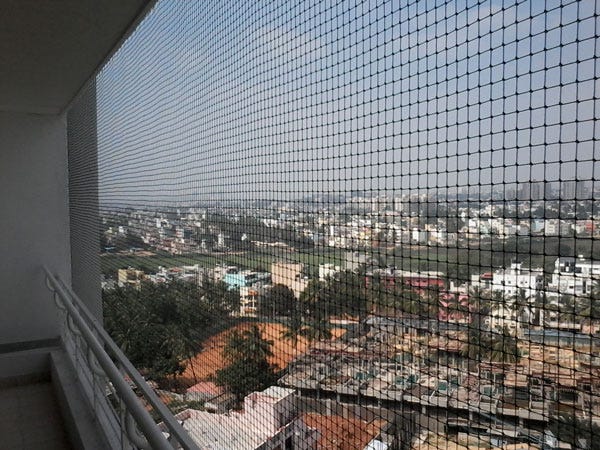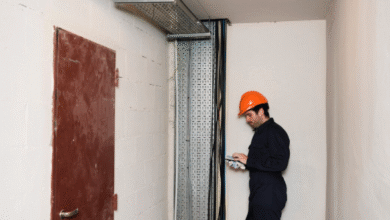
Setting up a safety net for your balcony can be essential, especially if you have young children, pets, or simply want to ensure peace of mind without altering the structure of your home. Traditionally, installing a net meant using drills, nails, and permanent fixtures that could damage walls or railings. But what if you could install a strong, reliable balcony safety net without drilling a single hole? Fortunately, today’s market offers practical, non-invasive solutions that are both effective and aesthetically pleasing. In this article, we’ll walk you through everything you need to know about quick, no-drill balcony net setups.
Why Go Drill-Free?
There are several reasons people prefer no-drill net installations. Firstly, many people live in rented apartments where permanent modifications are not allowed. Landlords typically restrict any alterations that leave marks or damage. Even in owned properties, homeowners may not want to commit to permanent changes. Drilling into balcony walls or railings can not only affect the appearance but may also weaken the structure if not done correctly. Moreover, no-drill solutions are easier to remove when no longer needed, making them perfect for temporary safety needs.
Choosing the Right Net Material
The first step in setting up a balcony net without drilling is choosing the right type of net. Nylon nets are among the most popular options due to their strength, flexibility, and weather resistance. These nets can withstand sun, rain, and wind, making them ideal for outdoor use. Additionally, polyethylene and HDPE (high-density polyethylene) nets offer UV resistance and come in various thicknesses and mesh sizes, allowing users to choose based on specific needs—such as keeping pets in or birds out.
Make sure the net you purchase is specifically labeled for balcony or safety use. These often include reinforced edges and strong knotting or weaving patterns, which are crucial for durability.
Measuring and Preparing Your Balcony
Before purchasing and installing your net, measure the dimensions of your balcony carefully. This includes the height from railing to ceiling or top support area, and the total width. Also, consider any curves, corners, or railings that might require extra material or customized fitting.
Once you have the correct measurements, clean the installation areas where you plan to attach the net. This helps ensure adhesive materials stick properly and other fastening tools hold firmly.
No-Drill Installation Techniques
There are several methods to attach a balcony safety net without drilling:
1. Cable Ties and Zip Ties:
One of the simplest ways is to use heavy-duty zip ties. These can be looped through the mesh of the net and secured tightly around balcony railings, poles, or pre-existing grilles. Zip ties are affordable, strong, and easy to remove or adjust if necessary.
2. Adhesive Hooks and Mounting Clips:
Many companies now produce ultra-strong adhesive hooks that stick to metal, glass, or tile surfaces. These can be placed along the edges of your balcony safety net in dubai and used to anchor the netting. Make sure to select outdoor-grade adhesives to withstand weather conditions.
3. Velcro Straps and Buckles:
Velcro straps are another excellent no-drill option. They wrap around railings or posts and can be adjusted or removed easily. Some balcony nets even come with sewn-in Velcro for added convenience.
4. Tension Rods or Telescopic Poles:
If your balcony has vertical supports or walls, you can use tension rods or extendable poles to create a frame for your net. These rods are placed between the floor and ceiling (or two walls) and the net is fastened to the rods with clips, ties, or hooks.
Ensuring Safety and Tension
Once the net is installed using any of these no-drill methods, it’s essential to test the tension. A loosely hanging net can pose risks rather than offering protection. The net should be taut and securely fastened at all corners. Press lightly against various parts of the net to check if it sags or pulls away from the surface. Reinforce any weak points with additional ties or hooks as needed.
Maintenance and Durability
Although these installations are non-permanent, proper maintenance will ensure your net lasts as long as needed. Regularly inspect the net for tears, UV damage, or weakened fasteners. Replace any worn-out cable ties or reapply adhesive hooks if they begin to loosen. Cleaning the net with water and mild soap every few months will also prevent dust and dirt build-up, preserving both appearance and integrity.
Final Thoughts
Setting up a quick, no-drill balcony net is both practical and straightforward, requiring minimal tools and time. Whether you’re protecting children, pets, or just looking for added safety, non-invasive netting solutions are a reliable choice. With careful measurement, the right materials, and attention to installation, you can create a secure barrier on your balcony—no drilling required.




